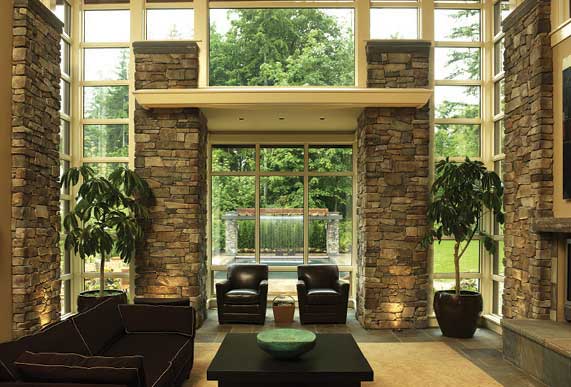If you’re looking to improve your home’s comfort, consider increasing its thermal mass. Increasing thermal mass means having the house structure and interior objects absorb and hold as much heat as possible. The heavier the item, the more mass it has to better absorb heat. As the outdoor temperature changes, thermal mass helps moderate indoor temperature swings to improve comfort and efficiency.
There are several ways thermal mass can save energy. By reducing indoor temperature swings in the winter, less heat is lost through walls and windows. This is particularly true in rooms where heat is generated, such as the kitchen, bathroom, or rooms with large south-facing windows. Also, heat produced by the furnace is absorbed by the home’s thermal mass and then released at night to warm it.
In summer, high thermal mass will keep rooms cooler, delay the need for using air conditioning, and keep it from cycling on-and-off throughout the day. Unless high humidity is an issue, opening windows at night and running a whole-house or window fan allows the thermal mass to lose the heat stored from the daytime. Close the windows in the morning and the cooled thermal mass absorbs heat coming in without causing the room temperature to rise as fast. The thermal mass of air is extremely low, so the cold outdoor air quickly absorbs heat from the indoor thermal mass.
Increase thermal mass by selecting the proper high mass (heavier) materials. They should be located throughout the home, but concentrate on rooms that generate heat or overheat in summer. When building a house or adding rooms, use heavy foam insulating sheathing on the outside of the wall framing, which allows it to become part of the interior thermal mass.
The thermal mass of various materials is rated by heat capacity properties. Water has a high heat capacity of 62.4 per cubic foot, compared to drywall at only 1.3 per cubic foot. Wet soil rates about 55, concrete about 31, brick about 27, and stone or tile ranges from 18 to 36. Their natural thermal properties, in addition to densities, determine these numbers.
For example, installing a dark, ceramic-tile flooring near a door or window is a great source of thermal mass. Decorative solid-brick walls work well in a room with a fireplace or large windows. Heavy granite or slate countertops in a kitchen or bath, and wood floors are also effective. The idea is to replace lighter materials with heavier ones.
Even the damp soil in large potted plants can store much heat, and plants help purify indoor air. For emergencies, storing milk jugs full of water under cabinets and near your heating system can also increase thermal mass.






